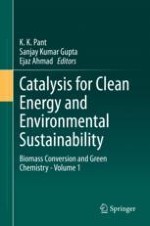2021 | OriginalPaper | Buchkapitel
Waste Valorization of Water Hyacinth Using Biorefinery Approach: A Sustainable Route
verfasst von : Priti V. Ganorkar, G. C. Jadeja, Jigisha K. Parikh, Meghal A. Desai
Erschienen in: Catalysis for Clean Energy and Environmental Sustainability
Aktivieren Sie unsere intelligente Suche, um passende Fachinhalte oder Patente zu finden.
Wählen Sie Textabschnitte aus um mit Künstlicher Intelligenz passenden Patente zu finden. powered by
Markieren Sie Textabschnitte, um KI-gestützt weitere passende Inhalte zu finden. powered by
